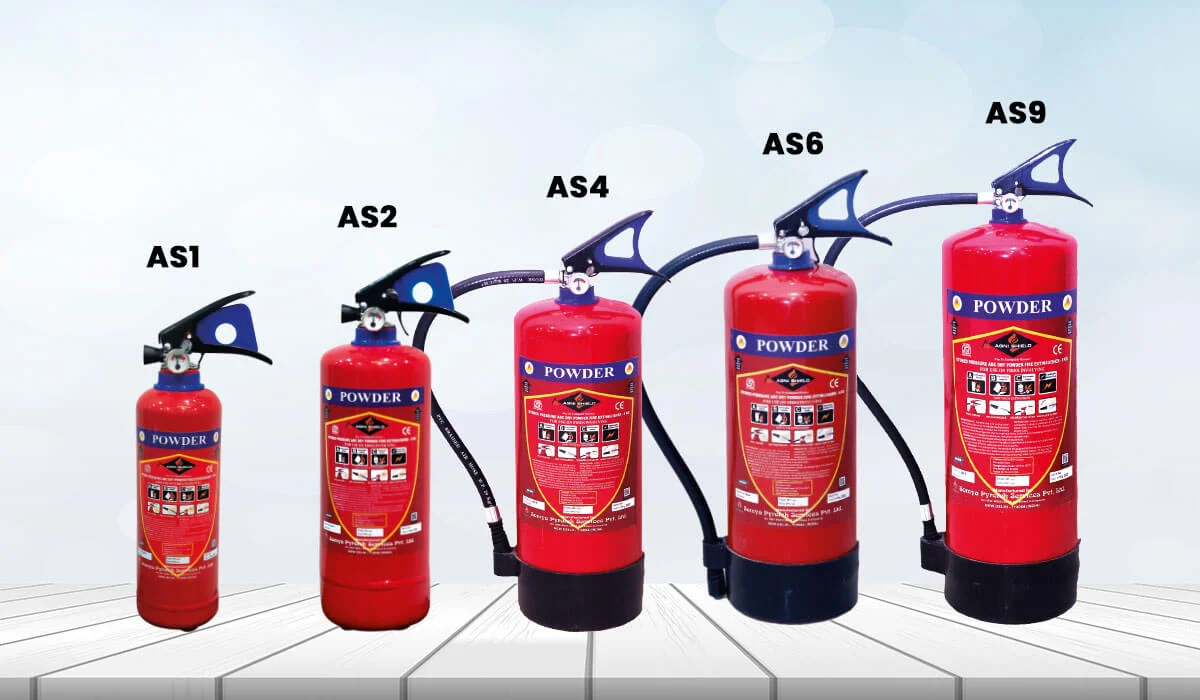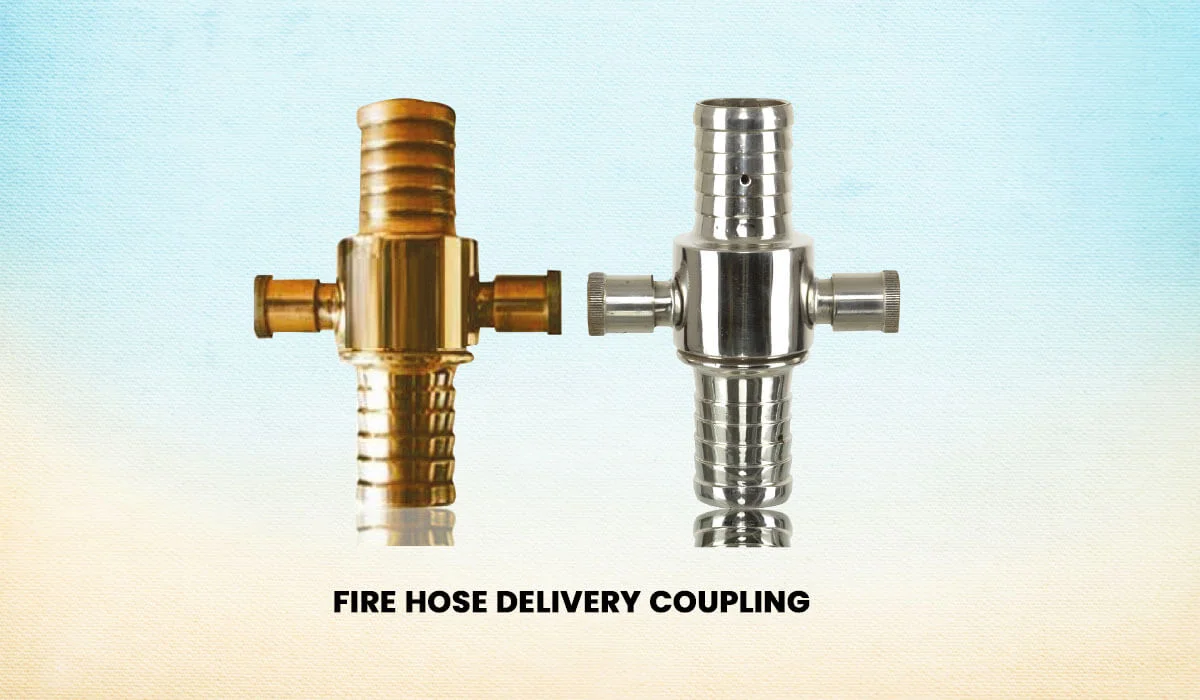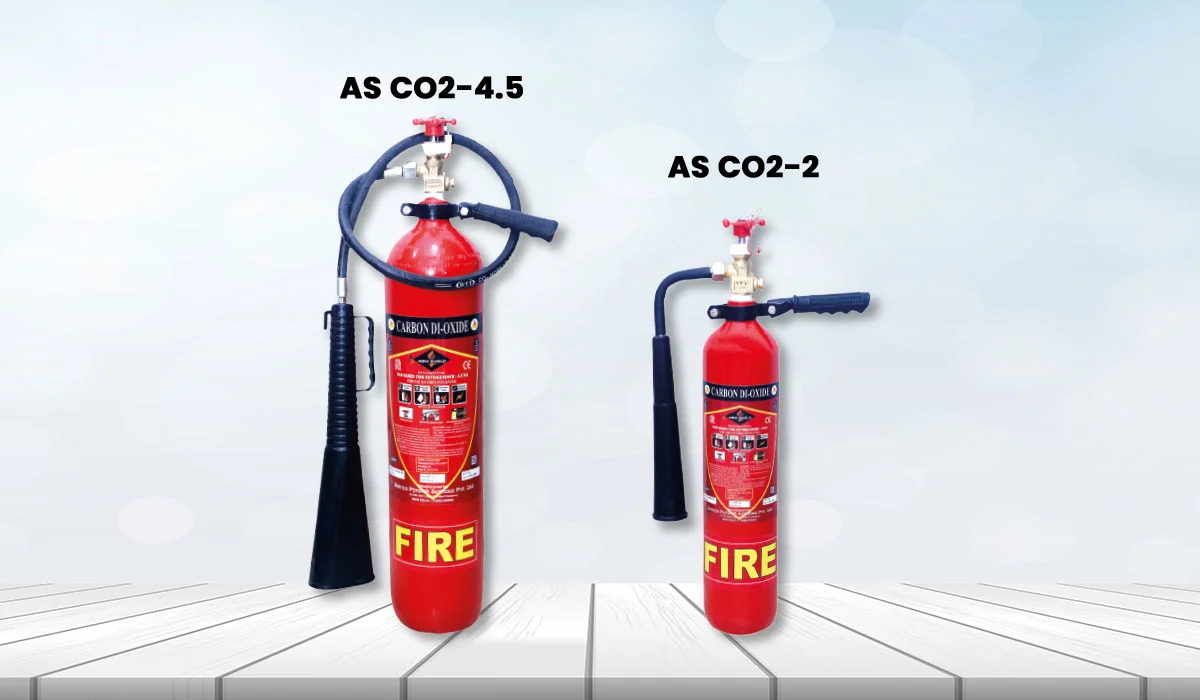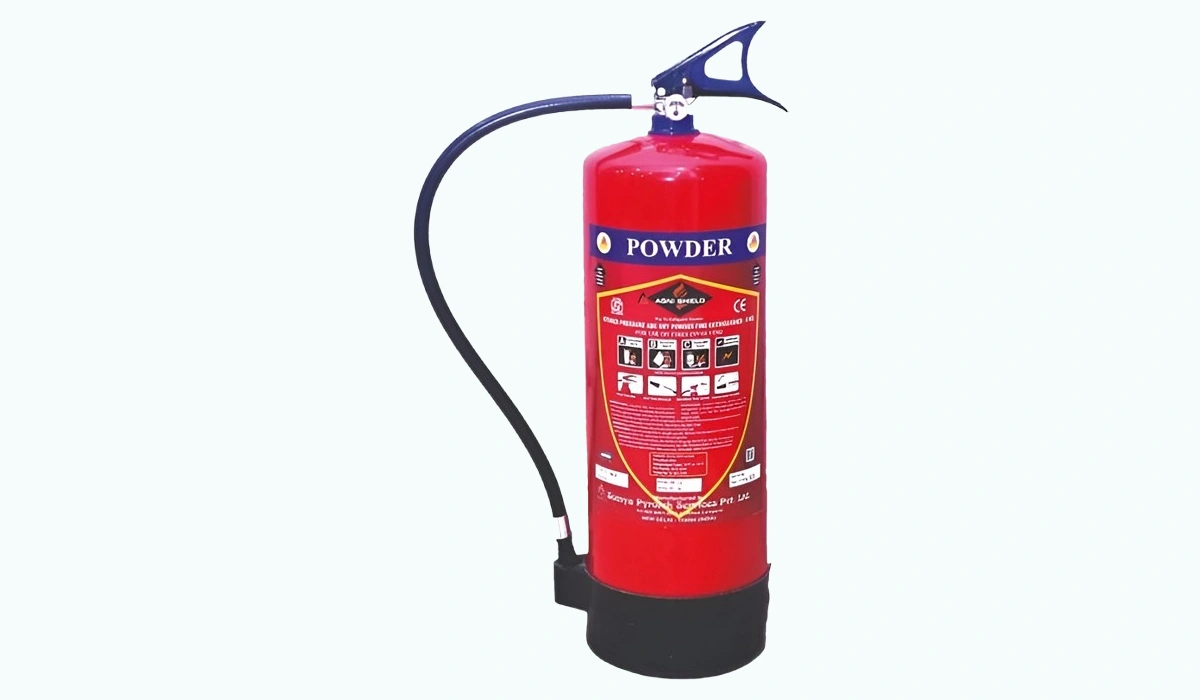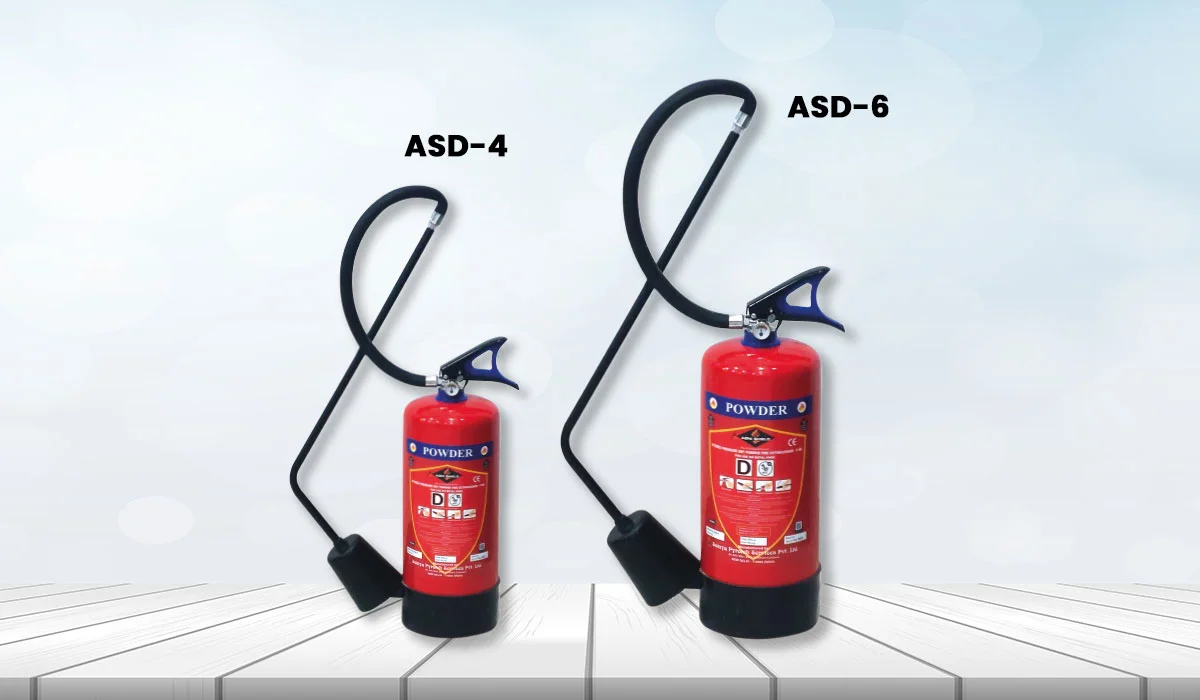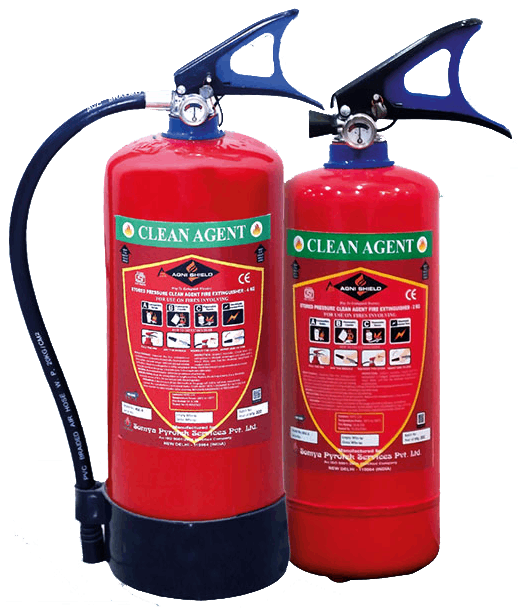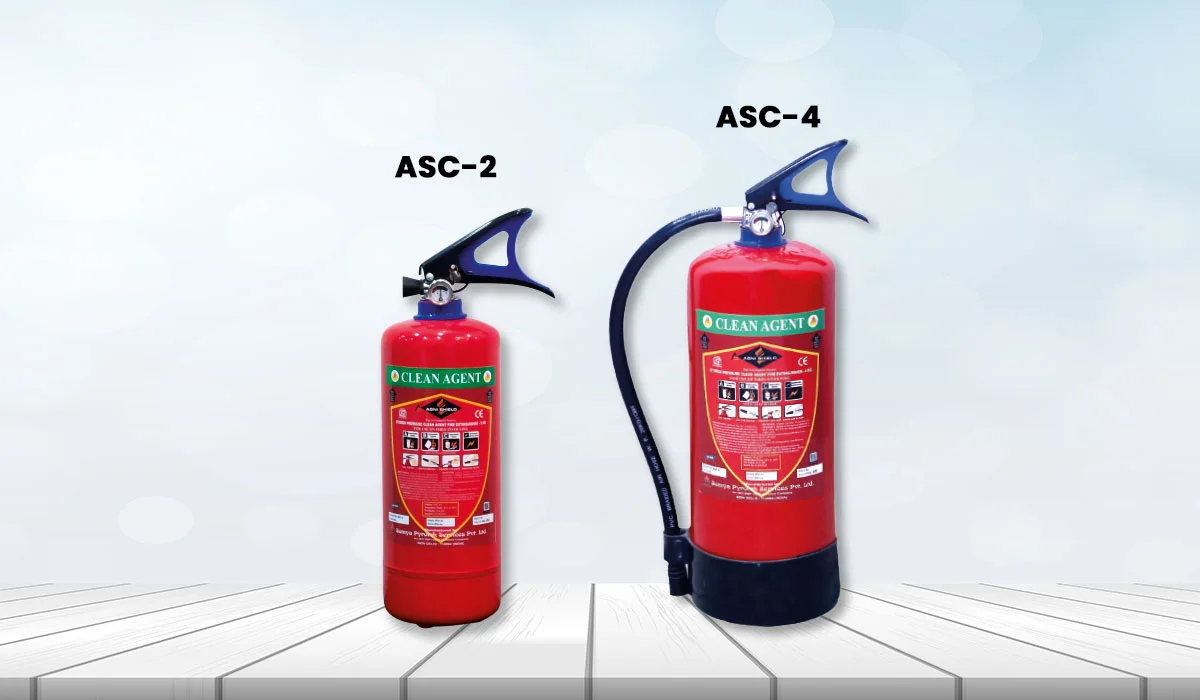
Clean Agent Fire Extinguisher
Capacity: 2kg, 5kg
Product Specification
- Capacity: 5 Kg
- Fire Class: Class A, Class B, Class C (editable)
- Extinguishing Medium: Dry Powder IS 4308 (editable)
- Operating Temperature: -30°C to 60°C
Product Description
A clean agent fire extinguisher contains the most potent and cleanest extinguishing agent properties available for A, B, and C fires. Additionally, it is suitable for all unexpected electrical fires. It is manufactured as an alternative to Halon gas, which is no longer legal to use in India due to the Montreal Protocol. Moreover, they are similar to CO2 and are also environmentally friendly (zero ozone depletion potential) and leave no remnants. Nevertheless, unlike CO2, they are usually safe to use in limited areas as the gas is non-harmful to humans.
Application Area of Clean Agent Fire Extinguisher
- Server Rooms / Data Centers
- Telecommunication Facilities
- Electrical Panels & Switchgear
- UPS & Battery Backup Rooms
- Computer Labs & IT Offices
- Medical Equipment Rooms
- Control Rooms in Industrial Plants
- Libraries and Archives
- Museums and Art Galleries
- Airports & Aircraft Hangars
- Ships, Yachts, and Marine Vessels
- Clean Rooms and Laboratories
- Semiconductor Manufacturing Units
- Banks and Financial Institutions
- Broadcasting Stations & Studios
- Luxury Hotels and Hospitality Kitchens
- Pharmaceutical Production Areas
- Nuclear and Power Plants
- Automated Manufacturing Facilities
- Residential High-Rise Apartments with Smart Tech
Key Features of Clean Agent Fire Extinguisher
- A clean agent portable fire extinguisher leaves no residue
- It is Electrically Non-Conductive
- It is entirely made up of Environmentally Friendly Material
- It offers Fast and Effective Suppression
- It is Safe for Occupied Spaces
- It is Suitable for Class B and Electrical Fires
- It offers No Damage to Sensitive Equipment
- It comes in a Compact and Lightweight Design
- It consists of a Wide Operating Temperature Range
- It is Globally Certified and Standardized
Technical Specifications of Clean Agent Fire Extinguisher
| Specification | Details |
|---|---|
| Warranty | 5-Year Warranty |
| Certifications | BS EN Approved, CE Marked, ISO 9001 Certified |
| Fire Rating | 21B |
| Dielectric Test | 35Kv Dielectric Tested |
| Extinguishing Agent | Fluoroketone (FK-5-1-12) |
| Global Warming Potential (GWP) | Less than 1 |
| Ozone Depletion Potential (ODP) | 0 |
| Height | 370 mm |
| Diameter | 108 mm |
| Filled Weight | 3.75 kg |
| Discharge Time | 9.6 seconds |
| Throw Range | Up to 3 metres |
| Operating Temperature Range | -30°C to 60°C |
| Manufacturer | Ceasefire |
What are the Benefits Of a Clean Agent Fire Extinguisher?
Consider the key benefits of a clean agent extinguisher before purchasing one, tailored to your specific needs and preferences.
- With these automatic fire extinguisher systems, as soon as a fire is detected in its system, the clean agent will automatically be released and suppress the flames within seconds. It is done either by lowering the oxygen level or preventing heat from the flame.
- Environmental Benefits: Clean agents are “clean” for a reason: they have little to no potential to cause global warming or ozone depletion, which would be a hazard to the climate.
- Non-Conductive: When putting out fires near electrical equipment, you won’t have to worry about getting shocked if you use these fire protection fluids.
- No Cleanup: You can quickly resume regular business operations following a fire outbreak because clean agents are efficient at suppressing fires and leave no residue behind.
What are the Disadvantages Of a Clean Agent Fire Extinguisher?
- Not all are Suitable for Ingestion by Humans: If you are exposed to high concentrations of specific clean agents while in the fire suppression area, they may start to harm people if you remain there for an extended period.
- Cost: Due to their effectiveness, some brands of these cleaning agents can be expensive for a business to install in its establishment.
- Regulatory Matters: Depending on the specific rules that may be established, clean agents may occasionally be prohibited in particular locations.
How to Use a Clean Agent Fire Extinguisher?
Let’s discuss some crucial steps to use a clean agent fire extinguisher:
Step: 1 Hold the fire extinguisher in your hand or at a safe distance from the fire on the ground. Carefully remove the safety pin from its hose and slightly break the tamper seal.
Step: 2 Aim the hose and carefully place it at the base of the fire with one hand. Remember, do not aim for the fire flames, but instead for the base. Move the upper part of the extinguisher across the fire area.
Step: 3 Hold the operating lever in your other hand, then slowly squeeze it to discharge the water. As the fire begins to subside, you can start to move the hose closer to it and continue the process until the fire is completely extinguished.
Step: 4 Using the entire contents of the clean agent portable fire extinguisher, ensure the fire is entirely extinguished to cool down the surface area and monitor it until it re-ignites.
Maintenance and Inspection Tips for a Clean Agent Fire Extinguisher
Here are some vital maintenance and inspection tips that you must follow to enhance the shelf life of the clean agent extinguisher:
- Ensure to inspect the fire extinguishers for any physical damage signs. Additionally, do not forget to check that the pressure gauge and tamper-evident seal are intact, in place, and functioning accurately. Like the monthly check-ups, an expert will ensure that the fire extinguisher is working correctly and has the proper pressure range.
- Make sure that the discharge hose is not damaged or blocked for any reason. Likewise, the 0-ring on the release hose will also be replaced.
- Ensure that a clean agent portable fire extinguisher is positioned accurately. Additionally, ensure that you read the instructions carefully.
- Check the wall mountings.
- Check the fire extinguisher’s weight and details on every extinguisher label.
- Clean the fire extinguisher if needed.

